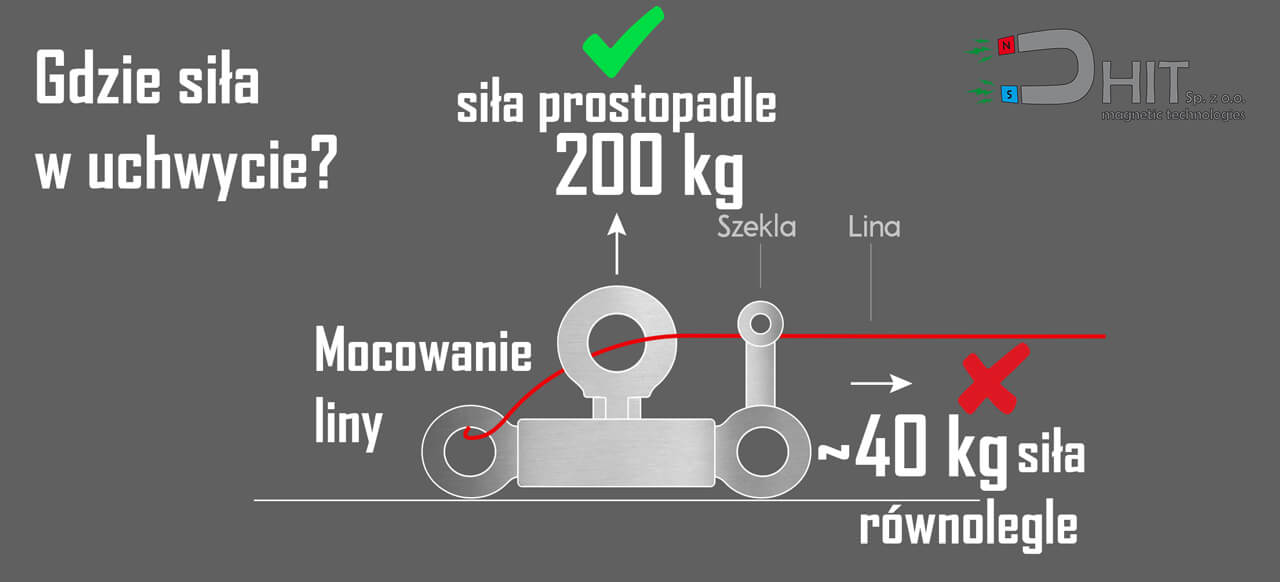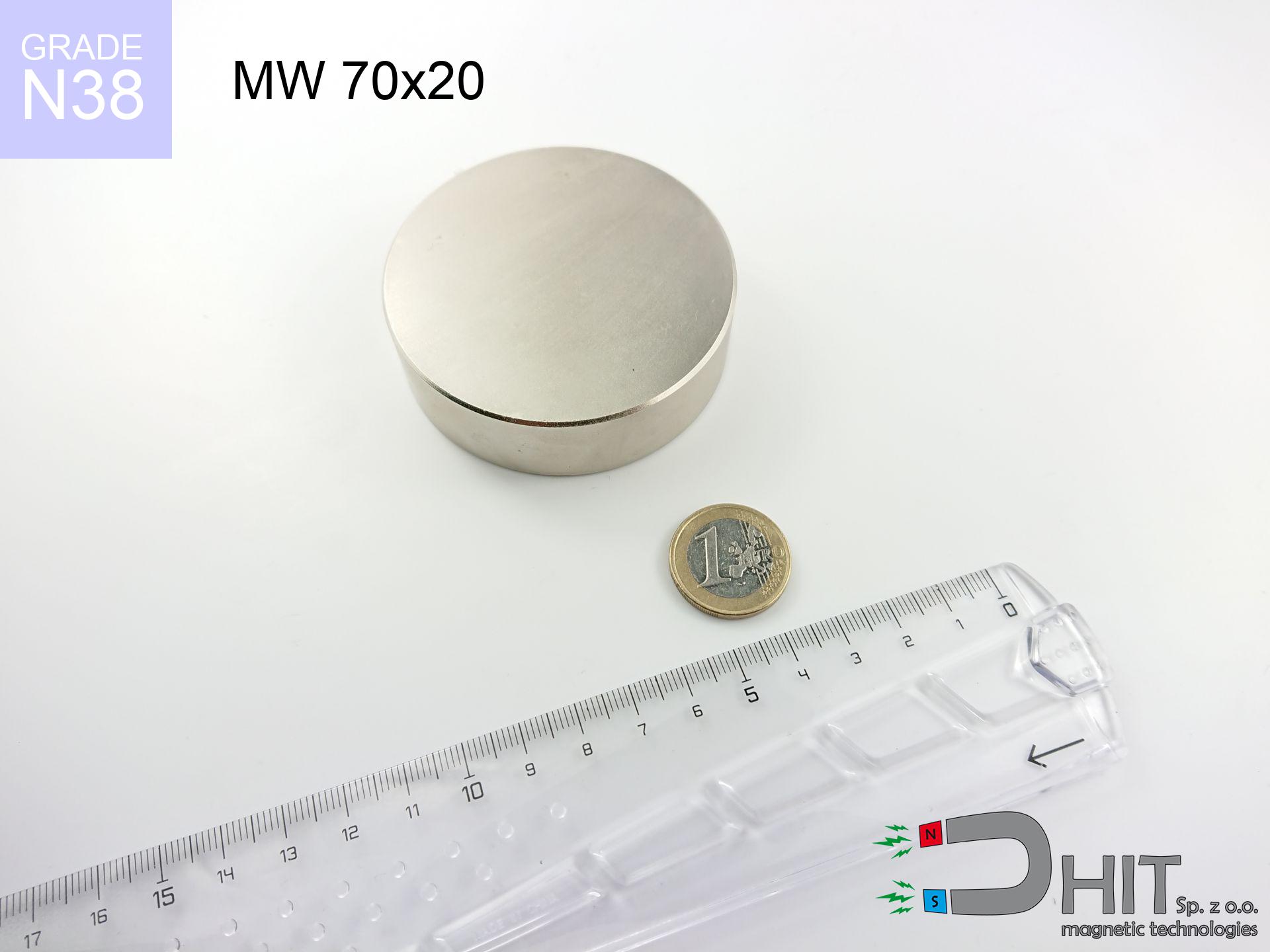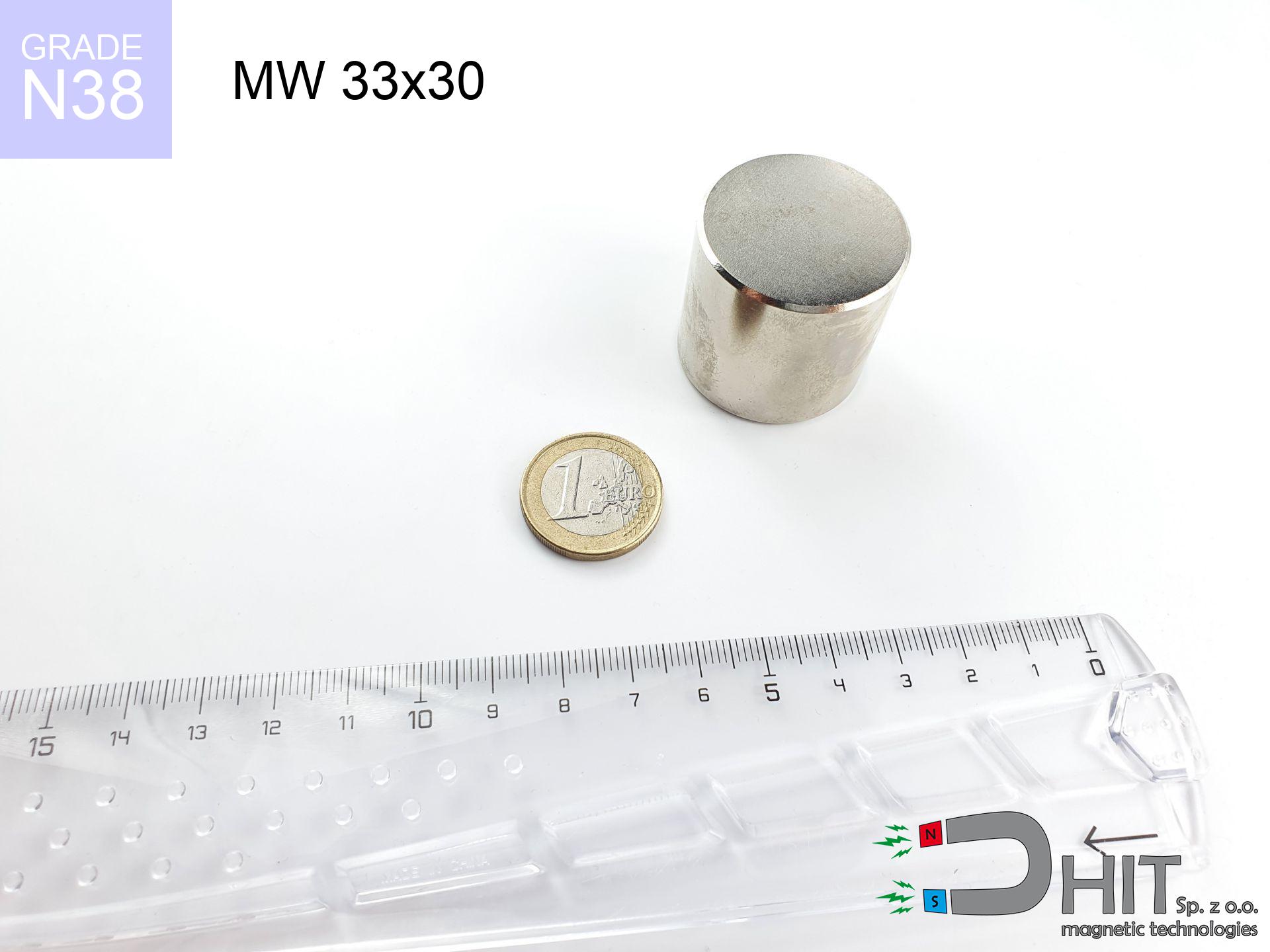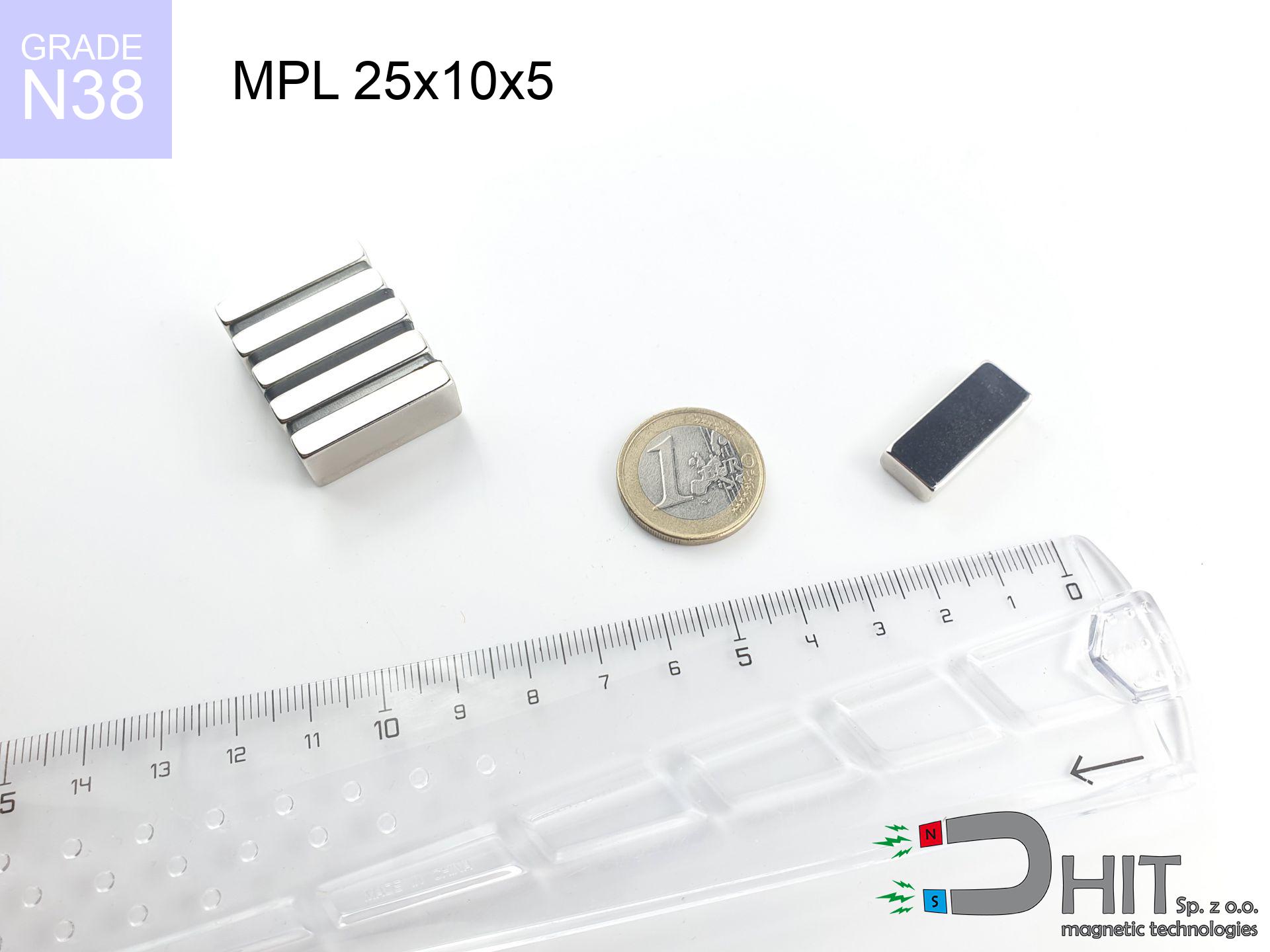UMP 94x28 [3xM10] GW F300 GOLD Lina / N38 - search holder
search holder
Catalog no 210446
GTIN: 5906301814108
Diameter Ø [±0,1 mm]
94 mm
Height [±0,1 mm]
28 mm
Weight
1600 g
Load capacity
330 kg / 3236.19 N
Coating
[NiCuNi] nickel
300.00 ZŁ with VAT / pcs + price for transport
243.90 ZŁ net + 23% VAT / pcs
bulk discounts:
Need more?Not sure about your choice?
Contact us by phone
+48 888 99 98 98
otherwise drop us a message via
our online form
the contact section.
Lifting power and structure of magnetic components can be checked with our
online calculation tool.
Order by 14:00 and we’ll ship today!
UMP 94x28 [3xM10] GW F300 GOLD Lina / N38 - search holder
Magnetic properties of material N38
Physical properties of NdFeB
Shopping tips

Advantages and disadvantages of neodymium magnets NdFeB.
Besides their durability, neodymium magnets are valued for these benefits:
- They virtually do not lose power, because even after ten years, the decline in efficiency is only ~1% (based on calculations),
- Their ability to resist magnetic interference from external fields is impressive,
- The use of a decorative gold surface provides a smooth finish,
- They possess strong magnetic force measurable at the magnet’s surface,
- These magnets tolerate extreme temperatures, often exceeding 230°C, when properly designed (in relation to build),
- The ability for accurate shaping as well as adaptation to individual needs – neodymium magnets can be manufactured in multiple variants of geometries, which amplifies their functionality across industries,
- Wide application in modern technologies – they find application in hard drives, electric motors, clinical machines as well as technologically developed systems,
- Relatively small size with high magnetic force – neodymium magnets offer strong power in tiny dimensions, which makes them ideal in compact constructions
Disadvantages of neodymium magnets:
- They are fragile when subjected to a sudden impact. If the magnets are exposed to physical collisions, they should be placed in a metal holder. The steel housing, in the form of a holder, protects the magnet from fracture , and at the same time strengthens its overall resistance,
- They lose strength at extreme temperatures. Most neodymium magnets experience permanent decline in strength when heated above 80°C (depending on the form and height). However, we offer special variants with high temperature resistance that can operate up to 230°C or higher,
- They rust in a humid environment – during outdoor use, we recommend using moisture-resistant magnets, such as those made of plastic,
- Using a cover – such as a magnetic holder – is advised due to the limitations in manufacturing fine shapes directly in the magnet,
- Possible threat related to magnet particles may arise, when consumed by mistake, which is crucial in the family environments. Furthermore, tiny components from these assemblies can interfere with diagnostics when ingested,
- Due to expensive raw materials, their cost is above average,
Detachment force of the magnet in optimal conditions – what it depends on?
The given pulling force of the magnet means the maximum force, assessed in the best circumstances, that is:
- using a steel plate with low carbon content, serving as a magnetic circuit closure
- of a thickness of at least 10 mm
- with a smooth surface
- with no separation
- with vertical force applied
- in normal thermal conditions
Practical aspects of lifting capacity – factors
Practical lifting force is determined by factors, by priority:
- Air gap between the magnet and the plate, because even a very small distance (e.g. 0.5 mm) causes a drop in lifting force of up to 50%.
- Direction of applied force, because the maximum lifting capacity is achieved under perpendicular application. The force required to slide the magnet along the plate is usually several times lower.
- Thickness of the plate, as a plate that is too thin causes part of the magnetic flux not to be used and to remain wasted in the air.
- Material of the plate, because higher carbon content lowers holding force, while higher iron content increases it. The best choice is steel with high magnetic permeability and high saturation induction.
- Surface of the plate, because the more smooth and polished it is, the better the contact and consequently the greater the magnetic saturation.
- Operating temperature, since all permanent magnets have a negative temperature coefficient. This means that at high temperatures they are weaker, while at sub-zero temperatures they become slightly stronger.
* Lifting capacity testing was performed on a smooth plate of suitable thickness, under a perpendicular pulling force, however under parallel forces the lifting capacity is smaller. Moreover, even a slight gap {between} the magnet’s surface and the plate lowers the lifting capacity.
Handle Neodymium Magnets with Caution
Avoid bringing neodymium magnets close to a phone or GPS.
Intense magnetic fields generated by neodymium magnets interfere with compasses and magnetometers used in navigation, as well as internal compasses of smartphones and GPS devices.
Do not give neodymium magnets to children.
Neodymium magnets are not toys. Be cautious and make sure no child plays with them. In the case of swallowing multiple magnets simultaneously, they can attract to each other through the intestinal walls. In the worst case scenario, this can lead to death.
Neodymium magnets are the strongest magnets ever created, and their power can shock you.
Please review the information on how to handle neodymium magnets and avoid significant harm to your body, as well as prevent unintentional disruption to the magnets.
The magnet coating is made of nickel, so be cautious if you have an allergy.
Studies show a small percentage of people have allergies to certain metals, including nickel. An allergic reaction often manifests as skin redness and rash. If you have a nickel allergy, you can try wearing gloves or simply avoid direct contact with nickel-plated neodymium magnets.
Dust and powder from neodymium magnets are flammable.
Avoid drilling or mechanical processing of neodymium magnets. If the magnet is crushed into fine powder or dust, it becomes highly flammable.
Keep neodymium magnets away from people with pacemakers.
Neodymium magnets generate strong magnetic fields. As a result, they interfere with the operation of a pacemaker. This is because many of these devices are equipped with a function that deactivates the device in a magnetic field.
Neodymium magnets can attract to each other due to their immense internal force, causing the skin and other body parts to get pinched and resulting in significant swellings.
If joining of neodymium magnets is not controlled, then they may crumble and crack. Remember not to approach them to each other or hold them firmly in hands at a distance less than 10 cm.
Keep neodymium magnets away from the wallet, computer, and TV.
The strong magnetic field generated by neodymium magnets can damage magnetic media such as floppy disks, video tapes, HDDs, credit cards, magnetic ID cards, cassette tapes, etc. devices. They can also destroy videos, televisions, CRT computer monitors. Remember not to place neodymium magnets close to these electronic devices.
Neodymium magnets can demagnetize at high temperatures.
Although magnets have demonstrated their effectiveness up to 80°C or 175°F, the temperature can vary depending on the type, shape, and intended use of the specific magnet.
Neodymium magnetic are characterized by their fragility, which can cause them to shatter.
Neodymium magnets are characterized by significant fragility. Neodymium magnets are made of metal and coated with a shiny nickel surface, but they are not as hard as steel. At the moment of collision between the magnets, small metal fragments can be dispersed in different directions.
Exercise caution!
Please read the article - What danger lies in neodymium magnets? You will learn how to handle them properly.

![Fishing magnet UMP 94x28 [3xM10] GW F300 GOLD Lina / N38 - GOLD Series Fishing magnet UMP 94x28 [3xM10] GW F300 GOLD Lina / N38 - GOLD Series](https://cdn3.dhit.pl/graphics/banners/magnet.webp)
![UMP 94x28 [3xM10] GW F300 GOLD Lina / N38 - search holder](https://cdn3.dhit.pl/graphics/products/ump-94x28-m10-gw-f300-+lina-kac.jpg)





